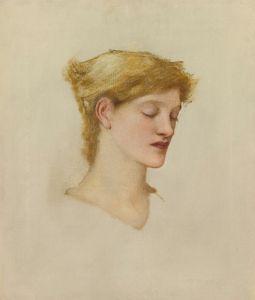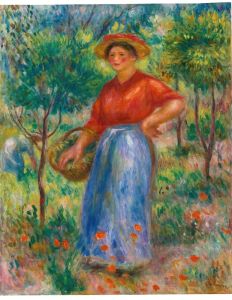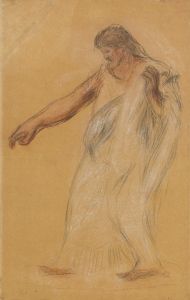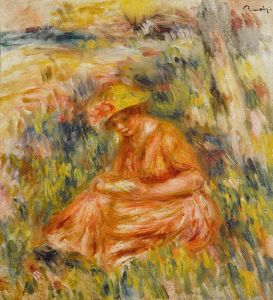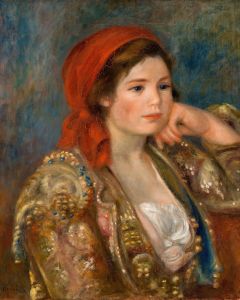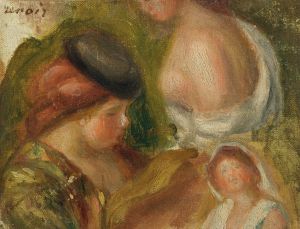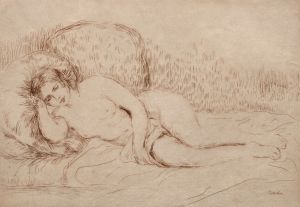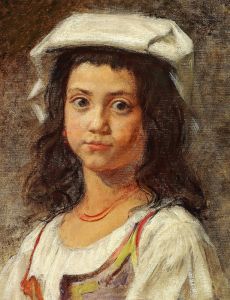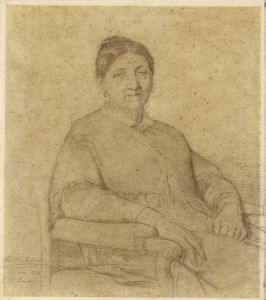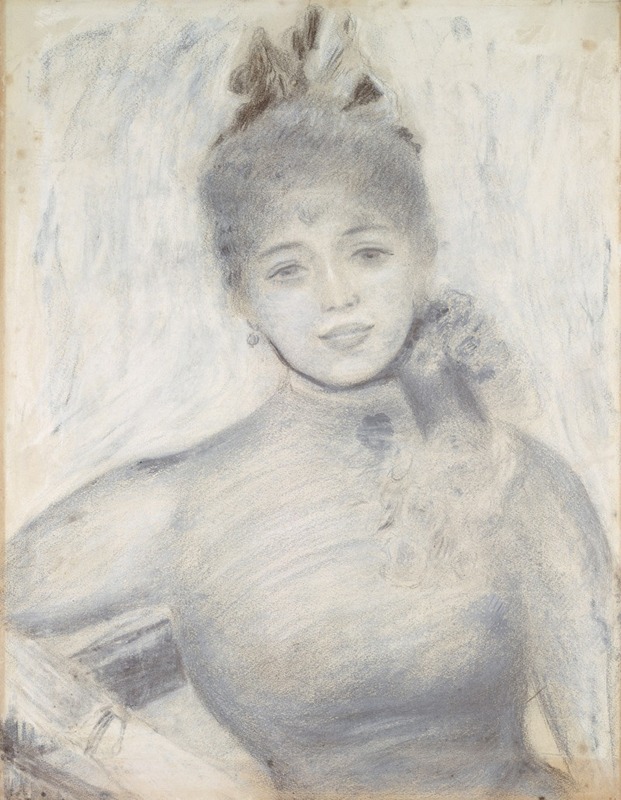
Portrait of Séverine
A hand-painted replica of Pierre-Auguste Renoir’s masterpiece Portrait of Séverine, meticulously crafted by professional artists to capture the true essence of the original. Each piece is created with museum-quality canvas and rare mineral pigments, carefully painted by experienced artists with delicate brushstrokes and rich, layered colors to perfectly recreate the texture of the original artwork. Unlike machine-printed reproductions, this hand-painted version brings the painting to life, infused with the artist’s emotions and skill in every stroke. Whether for personal collection or home decoration, it instantly elevates the artistic atmosphere of any space.
"Portrait of Séverine" is a painting by the renowned French artist Pierre-Auguste Renoir, a leading figure in the Impressionist movement. Renoir, known for his vibrant light and saturated color, often focused on people in intimate and candid compositions. This particular work captures the likeness of Séverine, a notable figure in French society during the late 19th and early 20th centuries.
Séverine, whose real name was Caroline Rémy de Guebhard, was a prominent journalist and feminist. She was known for her advocacy of social justice and her involvement in various political causes, including women's rights and the abolition of the death penalty. Her work as a journalist was influential, and she was associated with several progressive publications of her time.
Renoir's portrait of Séverine is an example of his ability to capture not only the physical likeness of his subjects but also their personality and essence. The painting reflects Renoir's characteristic style, with soft brushstrokes and a focus on the play of light and shadow. The use of color in the portrait is typical of Renoir's work, with warm tones that bring a sense of vitality and presence to the subject.
The exact date of the painting is not well-documented, but it is believed to have been created during a period when Renoir was deeply engaged in portraiture, capturing the images of many of his contemporaries. This period was marked by Renoir's transition from the more radical Impressionist techniques to a style that incorporated more classical elements, reflecting his interest in the works of the old masters.
Renoir's relationship with Séverine is not extensively documented, but it is clear that he held her in high regard, as evidenced by the care and attention to detail in the portrait. The painting serves as a testament to Séverine's influence and the respect she garnered from her contemporaries, including artists like Renoir.
Today, "Portrait of Séverine" is appreciated not only as a work of art but also as a historical document that provides insight into the cultural and social dynamics of the time. It stands as a representation of the intersection between art and social activism, highlighting the role of influential figures like Séverine in shaping public discourse.
The painting is part of a broader collection of Renoir's works that continue to be studied and admired for their contribution to the development of modern art. Renoir's ability to capture the spirit of his age through his portraits remains a significant aspect of his legacy, and "Portrait of Séverine" is a notable example of this enduring impact.





